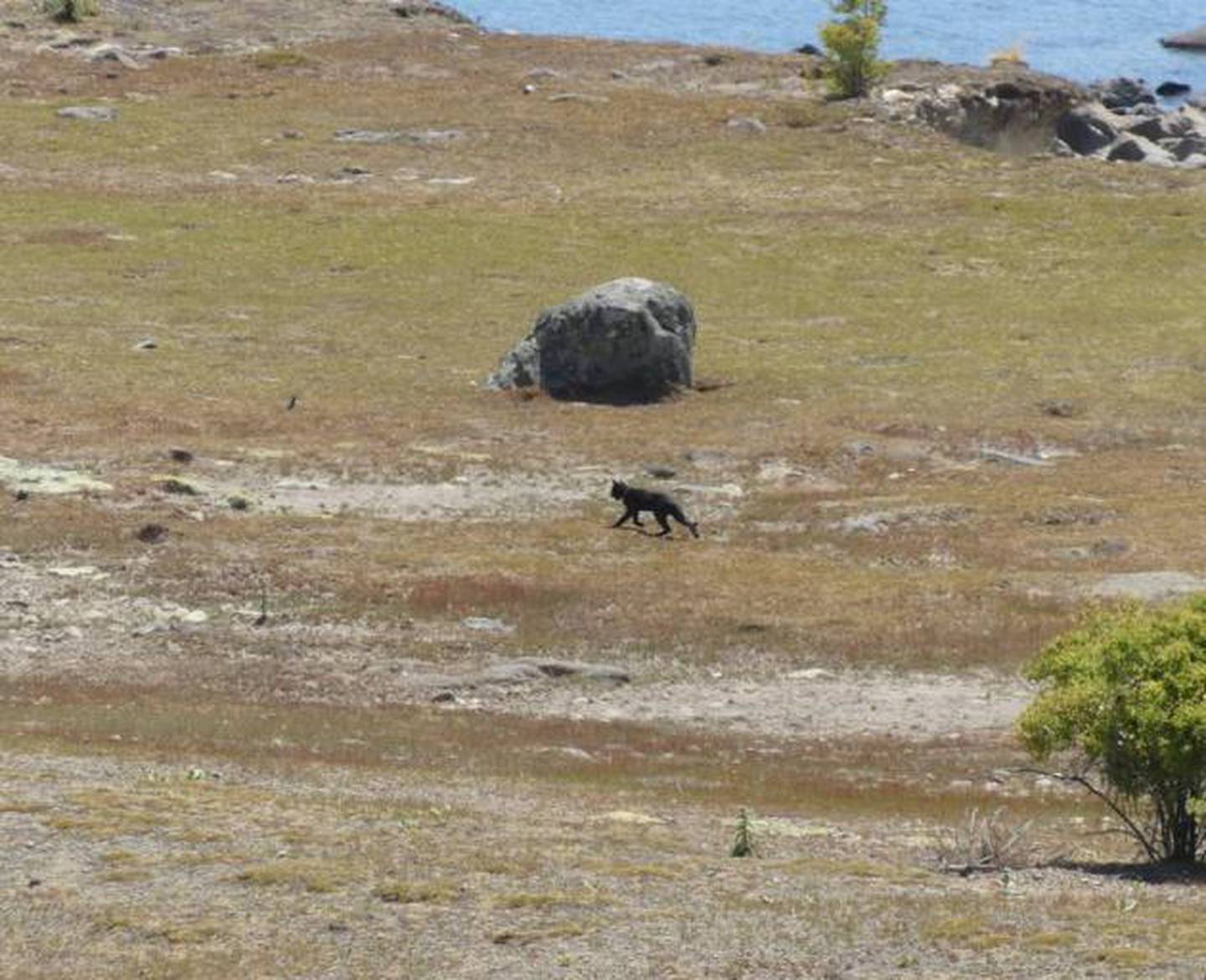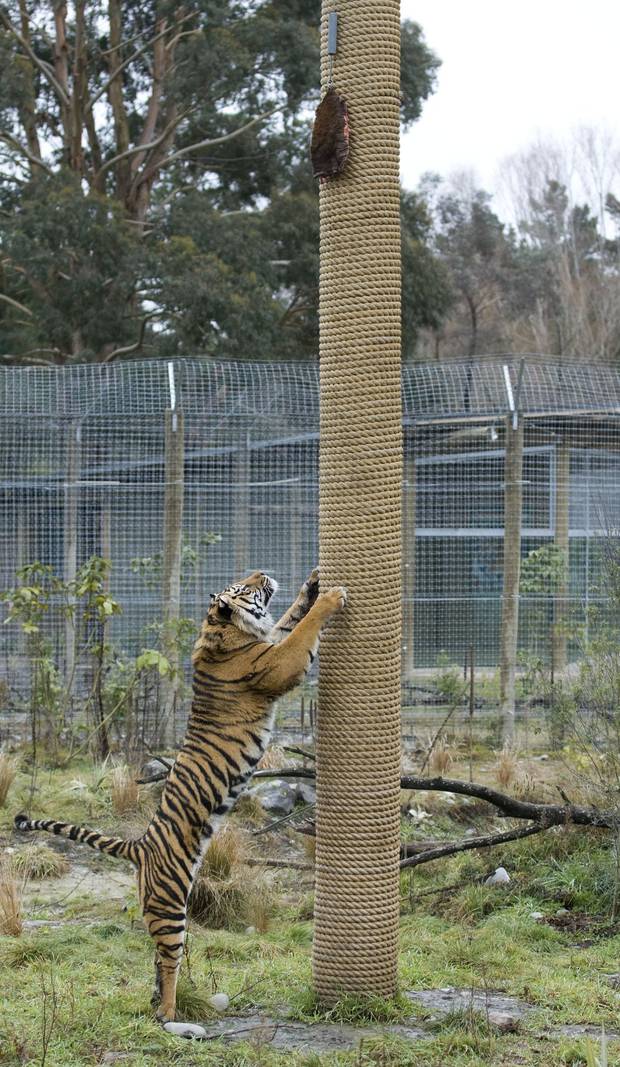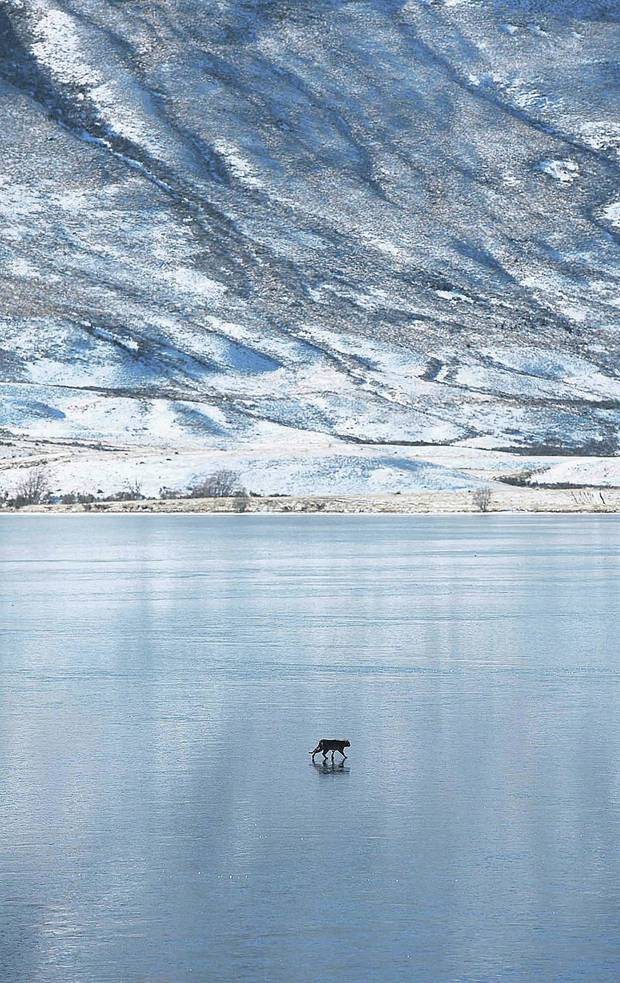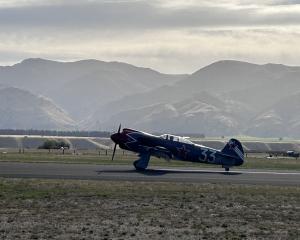
David Whinwray, an amateur big cat hunter, has told of encountering what he described as a tawny-greyish cat about six metres away from him in Christchurch.
Whinwray initially believed the cat to be some kind of mountain lion. He told his father-in-law what he'd seen, and the older man recalled an incident from when he'd been working at the port in Lyttelton during World War I.
One day in 1915 a ship from America was being unloaded. On board the ship was a cargo of animals bound for Australia. One of the cages was accidentally broken open, allowing its occupant, a pregnant female puma, to escape. It was last seen running towards the Port Hills.
Apparently, officials made little attempt to catch the cat and it seems likely that no search was conducted. It is possible that news of the incident was suppressed to quell any possible concerns the public might have about a wild puma on the loose. Besides which, it was believed the puma would not survive the freezing winter conditions.
Is it possible the puma did survive? Is she responsible for spawning generations of pumas that have remained elusive?
In the century since that incident, there have been the occasional sightings of large wild cats roaming the countryside, but these have largely been written off as cases of mistaken identity. That was until a close-up sighting of a large cat by Kaiapoi resident Frances Clark, which created national headlines in July 1977.
An early riser, Clark opened the blinds one morning and saw a tiger by her front gate. When questioned by the media later, she stated she knew a pig when she saw one and an Alsatian, but this was definitely a tiger; it was fair in colour and had a long tail. She could not make out any stripes.
Shocked and in disbelief, she decided not to say anything at first, but started worrying about small children heading to school later in the morning. She telephoned the police, who took her sighting seriously.
Initially, it was thought a tiger might have escaped from Orana Wildlife Park in nearby Harewood, or from the circus that had been in the area a week earlier. Police amassed a search party, which included some staff from Orana Park, some of whom were armed with tranquiliser guns. The search found no trace, and all cats from the zoo and circus were accounted for. Poor Clark was then subjected to ridicule and accused of being a liar.
Her claims were vindicated several days later when large paw marks and animal droppings were discovered at nearby Pines Beach.

The following day, a farmer near Pines Beach reported a large cat of similar size and description stalking his cattle. This prompted another search, but nothing was found. Police had no answers. They were suspicious that a tiger had got loose from either the zoo or the circus and had been recaptured before authorities found out. Police warned they would prosecute if this was ever proven.
The next reported sighting occurred in Twizel in the Mackenzie Country in 1996, when a mountain biker spotted a large cat striding along the bush line 30 metres away. She telephoned the Ministry of Agriculture and Fisheries (MAF) and described having seen what she thought was a puma or a panther, which she believed to be the size of a fully grown Labrador dog.
People at MAF quickly reassured her that it sounded like it was nothing more than a well-fed feral cat.

Possibly the most disturbing sighting to date came during 2007 in the Mount Somers area. One evening, a resident was outside in her garden when she heard an unusual sound. She looked over the fence to see a large black cat dragging a lamb across the paddock for 20 metres followed by a distressed ewe. The witness screamed in horror and the cat dropped the lamb then ran off into the bush. The injuries to the lamb were so severe that it died. The witness did not believe the cat to be a panther or puma, but rather an exceptionally large feral cat. Even so, she was surprised at its strength and viciousness.
In October 2013, a truck driver received the shock of his life when he saw a large black cat the size of a Labrador feeding on roadkill outside Fairlie and, a short time later, Michael O'Neill took a photo of what appeared to be a large black cat walking across the frozen Lake Clearwater.
Angela Montgomery will never forget what she spotted around 6.30 one morning in August 2016. Montgomery lives in a farmhouse in Eiffelton, a small farming community on the Canterbury Plains near the Hinds River.
On a cool winter's morning, Montgomery got up, made herself a cup of coffee and sat outside, looking across the farm. About 150 metres away, some movement near a hedge caught her attention. She saw a dark creature "prowling" then walking along adjacent to the hedge line.

She believes the animal was definitely some sort of cat because of the way it moved. Using the size of the hedge for comparison, she believes the animal was bigger than a Labrador, but smaller than a cow.
Having done some research into big cat sightings, she is adamant that what she saw was a panther or something similar.
"These creatures walk among us."
While researching these sightings, I received an email from a young farm labourer, who was an acquaintance of Montgomery's partner. He had heard about Montgomery's sighting in August 2016 and was sceptical until he had his own encounter shortly afterwards.
"I was out possum trapping ... I was deep in the bush and I heard this strange noise I've never heard before. It was like deep, heavy breathing; a kind of guttural growl cattle give off, but also something like a real loud purr after the exhale. A combination of that, if you know what I mean?
"I thought it was a boar at first. I looked over, it would've been maybe 80 or so metres away. I did a double-take. It was this huge bloody cat. But it wasn't a wild f****** house cat, this was one huge monster of a thing. Would've been the size of, if not slightly smaller than, an Alsatian dog, and it had a round face and pointed ears and a long-as tubular tail.
"I kept real still, and I think it must've sensed me and it ran off. I waited there about three or four minutes not knowing what to do and shitting my pants. I then ran like buggery back to the jeep. I had my phone in my pocket all the time, but I didn't even think to take a picture.
"I didn't tell anyone because they would just laugh and give me s***. I have been back in the bush many times since and I haven't ever seen it again, but I am real wary now. I didn't take the dog with me that day and I wonder what might've happened if I did. That cat would definitely have ripped him to shreds. It is something I will never forget."
Around the time of Montgomery's sighting, Australian residents recalled that during 1942 Mt Gambier was used as a base for several US Army groups, one of which had a mascot in the form of a black puma. Several black pumas were brought into Australia and kept in the army compound to boost morale. When it became clear that they would not be allowed out of the country when the servicemen left, it is alleged the pumas were let loose in the Grampians mountain range where they multiplied in numbers, thus accounting for numerous sightings in that region over the years.
The rumour also grew legs here, but the story was quickly dispelled – no panther or puma came into the country during the war, nor was there any record of visiting US personnel bringing in any such animal, even just en route.
Authorities say no such animal escaped from any zoo, and no records show one being released into the wild. Credence can be given to the sighting of an escaped puma by Whinwray's father-in-law back in 1915, but could this puma have survived the harsh Canterbury winter and spawned generations? The majority of sightings have been in winter.
Authorities are quick to dispel sightings, often describing witnesses as seeing large well-fed feral cats or dogs. Hunters able to get close enough say they often come across large feral cats, but not cats as large as Labradors or Alsatians.
If the 1915 puma did multiply, then could its offspring have mated with feral cats? Official explanations state large, super-stealthy feral cats have evolved through natural selection.
Pest officers say the domestic cat transmogrifies into a very different creature after a few generations of roughing it. There is definitely potential for some form of gigantism to have occurred.
These cats have fed lavishly on wild meat and have grown way over the size of the normal domestic cat.
While there has not been any reported tell-tale faecal matter found, there has been evidence of badly mauled sheep and mutilated rabbits, hares and birds in the areas where the cats have been spotted.
How come these panthers have not been caught? Traps have been set, including some with live goats as bait, but none has been taken.
The wild cat is elusive, and, despite its dark colouring, it can easily blend into its forested surroundings. Until one is caught or a clear close-up photograph taken, they are always going to be a true mystery.

By Scott Bainbridge
Out June 8
Bateman Books
RRP $39.99













